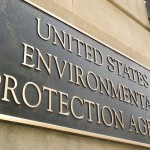Unsated by its recently proposed carbon regulations, the Environmental Protection Agency (EPA) is pressing on in search of its next regulatory conquest: ozone.
Ozone is one of the six common air pollutants that the 1970 Clean Air Act gave the Agency power to regulate. Set at a maximum of 125 parts per billion (ppb) in 1979, ozone has continually faced stiffer regulations as its atmospheric presence has fallen: 84 ppb in 1997 and 75 ppb in 2008. Now the EPA plans to regulate it further still: to 60 ppb, a regulation that the EPA estimates will be one of the biggest in history, costing the economy $90 billion annually.
In addition to being extremely costly, this regulation is unnecessary. In 2008, even the Agency deemed, and a federal court agreed, that ozone at 75 ppb is safe for human health. In fact, such a stringent new standard verges on the ozone levels that already occur naturally in the atmosphere. For instance, ozone exists at 71 ppb at Big Bend National Park in Texas, where there is no man-made pollution.
To justify such stringent regulations, the EPA is using dubious science. The overwhelming majority of scientific evidence – hundreds of scientific studies – say ozone is safe at 75 ppb and no further health benefits will accrue with a more stringent standard. But the EPA refuses to evaluate all the scientific studies – called a “weight-of-evidence” analysis. Instead, it cherry-picks studies that confirm its position and ignores ones that do not.
Drs. Sonja Sax and Julie Goodman, of the Harvard School of Public Health, criticize EPA ozone science further. They say the EPA does not adequately control for smoking or health problems in the participants in its ozone studies. This results in biased and unrealistic conclusions that indicate ozone causes more health problems than what the science supports:
The EPA considers worst-case scenarios arguably to protect the most sensitive people in a population. However, in its ozone health-risk and exposure assessment, the EPA makes many “worst-case” assumptions that could not all occur at one time, leading to an unrealistic scenario that overestimates risks.
But bad science, huge cost, and intangible benefits have never stopped the EPA’s regulatory army before. In fact, little can stop a federal agency hell-bent on achieving a political agenda.





